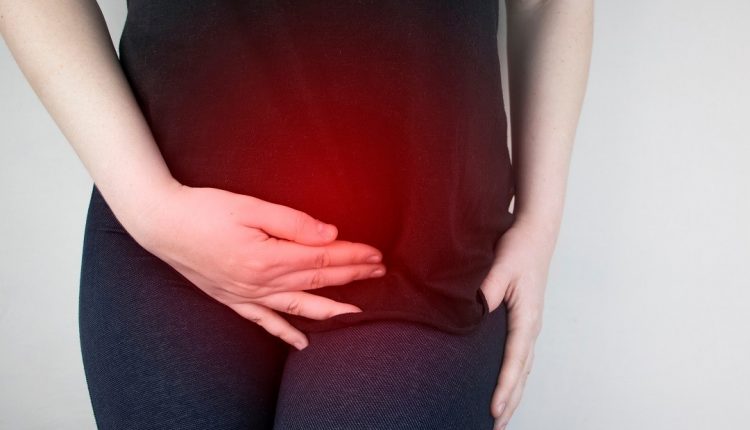
Chronic cystitis: symptoms, diagnosis and treatment of this bladder inflammation
Cystitis consists of a very annoying inflammation of the bladder mucosa and is accompanied by the continuous need to urinate, sometimes with pain when urinating
The pathology often resolves itself in a single episode, but if it is not treated in the right way it can recur and become chronic.
Chronic cystitis: what is it?
We speak of chronic (or recurrent) cystitis in the event of the appearance of three or more episodes of cystitis in the course of a year.
Cystitis is considered as a reinfection when it is caused by a bacterium different from the one that caused the previous episode or by the same bacterium, but after a negative urine culture or after a two-week interval between the two episodes.
It is instead considered as persistence in the event that, despite the therapy, the pathology continues to be present.
Chronic cystitis: symptoms
The symptoms of chronic cystitis are similar to those of cystitis, but more persistent.
Sufferers experience an urgent and frequent need to urinate as well as a feeling of weight on the bladder.
Bladder burning is constant and increases with urination.
Chronic cystitis also causes severe pain in the urethra and can make sexual intercourse painful.
Sometimes it can manifest itself with the appearance of blood in the urine. Less frequent is fever.
Chronic cystitis: the causes
Under normal conditions, the bladder has a strong resistance to infection and the urine it contains is sterile.
However, certain conditions can make the body more sensitive and less prepared to counteract the aggression of bacteria.
Organisms can reach the bladder from the urethra.
Chronic cystitis occurs more frequently in people who have a weakened immune system due to irregular diet, excessive stress, or prolonged antibiotic therapy.
Patients who have urinary tract malformations, who use catheters and have bladder stones or tumors are predisposed.
Furthermore, this pathology is also attributable to diabetes, the presence of glucose in the urine, in fact, favors bacterial proliferation.
Vaginal atrophy due to estrogen deficiency, urinary incontinence, bladder prolapse, intestinal dysbiosis are also risk factors.
Chronic cystitis: therapy
Chronic cystitis must be tackled with targeted therapy that involves taking pain-relieving drugs, to reduce muscle contraction, and antibiotic drugs to eliminate the bacterium causing the infection.
To counteract the pathology it is important that the patient follows some general rules.
First of all, it is recommended to drink at least 2 liters of water a day, to dilute the bacterial load, and to follow some hygienic-behavioural rules which allow for speeding up healing.
Read Also
Emergency Live Even More…Live: Download The New Free App Of Your Newspaper For IOS And Android
Sexually Transmitted Diseases: Chlamydia
Symptoms, Diagnosis And Treatment Of Cystopyelitis
Ovarian Cyst: Symptoms, Cause And Treatment
How Does Cystitis Manifest Itself?
Endometriosis Cyst: Symptoms, Diagnosis, Treatment Of Endometrioma
Cervical Cancer: The Importance Of Prevention
Vulvodynia: What Are The Symptoms And How To Treat It
What Is Vulvodynia? Symptoms, Diagnosis And Treatment: Talk To The Expert
Accumulation Of Fluid In The Peritoneal Cavity: Possible Causes And Symptoms Of Ascites
What’s Causing Your Abdominal Pain And How To Treat It
Pelvic Varicocele: What It Is And How To Recognise The Symptoms
Can Endometriosis Cause Infertility?
Transvaginal Ultrasound: How It Works And Why It Is Important
Candida Albicans And Other Forms Of Vaginitis: Symptoms, Causes And Treatment
What Is Vulvovaginitis? Symptoms, Diagnosis And Treatment
Urinary Tract Infections: Symptoms And Diagnosis Of Cystitis
Cervical Cancer Screening, THINPrep And Pap Test: What Is The Difference?
Diagnostic And Operative Hysteroscopy: When Is It Necessary?
Techniques And Instruments For Performing Hysteroscopy
The Use Of Outpatient Hysteroscopy For Early Diagnosis
Utero-Vaginal Prolapse: What Is The Indicated Treatment?
Pelvic Floor Dysfunction: What It Is And How To Treat It
Pelvic Floor Dysfunction: Risk Factors
Salpingitis: Causes And Complications Of This Fallopian Tube Inflammation
Hysterosalpingography: Preparation And Usefulness Of The Examination
Gynaecological Cancers: What To Know To Prevent Them
Infections Of The Bladder Mucosa: Cystitis
Colposcopy: The Test Of The Vagina And Cervix
Colposcopy: What It Is And What It Is For
Gender Medicine And Women’s Health: Better Care And Prevention For Women
Nausea In Pregnancy: Tips And Strategies
Anorexia Nervosa: What Are The Symptoms, How To Intervene
Colposcopy: How To Prepare, How It Is Performed, When It Is Important
Cystitis: Symptoms, Causes And Remedies
Cystitis, Antibiotics Are Not Always Necessary: We Discover Non-Antibiotic Prophylaxis
Polycystic Ovary Syndrome: Signs, Symptoms And Treatment
Female Cystitis, How To Deal With It: Urological Perspectives



